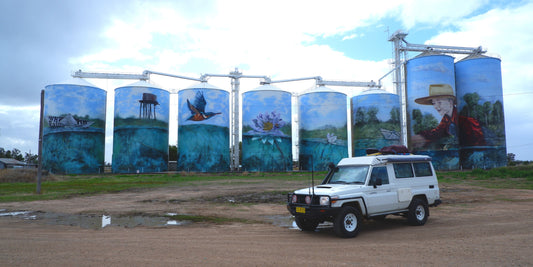As experienced campers and outdoor enthusiasts, we understand the importance of being prepared and knowledgeable before embarking on any camping trip.
We delve into some essential safety tips and practices that'll help ensure a secure and enjoyable experience for you and your fellow campers. From handling wildlife encounters to practising campfire safety, mastering navigation essentials, and being prepared for emergencies, let's explore the core elements of a safe camping trip.
Wildlife Encounters
- Research the local wildlife: You'll want to know if dingos hang out in the area, when it's snake season, if crocodiles are lurking in the rivers, etc.
- Store food properly: Keep all food and rubbish securely stored in animal-resistant containers and out of reach from hungry animals. Nothing wakes you faster than a dingo rummaging outside your tent for food.
- Maintain a safe distance: Never approach or feed wild animals. While a kangaroo may look cute and cuddly, we've all seen them get in a fight, and if you haven't, do yourself a favour and google that shit.
- Proper waste disposal: Dispose of food scraps and waste properly. Wild animals don't have the digestion to deal with our processed, shitty human food, pesticides, and, lord knows, plastic in their stomachs ain't good. Leave no trace, and we'll all get along just fine.
Campfire Safety
- Check fire rules: Before lighting a campfire, check local rules, fire bans, and weather conditions. In some areas, you may need a permit; in others, you might only be allowed a fire if it's in a fire pit.
- Clear the area: Ensure the fire pit is located in a designated area and surrounded by a clear space, free of flammable materials like dry leaves or overhanging branches.
- Keep it small: Maintain a manageable fire size, and never leave it unattended. Extinguish the fire completely before leaving the campsite or going to sleep.
- Extinguishing the fire: Use water or dirt to douse the flames, stirring the ashes until cool to the touch. Dispose of cold ashes in a designated container or scatter them safely away from vegetation.
Navigation Essentials
- Check the weather for the duration of your trip and the weeks prior. Some tracks and roads can be washed out or turned into river crossings from heavy rainfall weeks prior.
- Have a detailed map, guidebooks, or GPS systems that work without the internet. Nothing like getting lost in the middle of nowhere, which has no road traffic and no clue of where to go to instil fear in you. Getting off the beaten track is great, but know how to get yourself out.
- If you're heading remote, determine your desired trail and inform someone of your route and eta. Even if you're in a group, have someone at home who knows your rough wearables in case of an emergency.
Emergency Bits
- First Aid Kit: Pack a comprehensive first aid kit that includes essential items for treating minor injuries, snake bites and sprains.
- Communication: Take a portable charger, and consider carrying a personal locator beacon in remote areas. If you're heading off on foot, keep a contact number for local authorities and park rangers. Keeping your mobile emergency contact list updated is pretty handy.
- Weather: Stay updated on weather forecasts and be prepared for changing conditions. If the last few years of floods and fires have taught us anything, it's that weather is unpredictable.
While this camping safety 101 might seem all doom and gloom, it's not. 9 out of 10 times, we don't need any of this stuff, but when you do, you'll be glad you're sorted. Plus, you never know when you might need to help out a fell camper!
Safety is the key to unlocking a truly unforgettable camping experience. So gear up, embrace nature, and enjoy the great outdoors!




